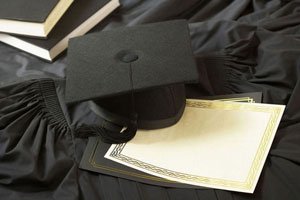The interest is high from South San Jose to Hollister and enough
parents say they would be inclined to send their child to a public
charter high school, but will it actually happen?
The interest is high from South San Jose to Hollister and enough parents say they would be inclined to send their child to a public charter high school, but will it actually happen?
The pivotal question finally came from the crowd of about 200 people – which included Gilroy residents – who attended a two-hour information session Thursday night at the Community and Cultural Center about Flex Academy.
“Can we count on this school opening in Morgan Hill?” one woman asked.
“It depends. It will open in this region. We have to gauge if there is interest and after tonight it looks as though there is real interest here,” said Flex Academy’s executive director Mark Kushner. “We will have an answer within two months.”
The academy is a “clicks and bricks” model that blends online classes in a librarylike setting with traditional science labs, debates and discussions of traditional high schools.
Kushner, a Stanford professor and chair on the California Advisory Commission on Charter Schools, said a charter has been approved by the Santa Clara County Board of Education to open three schools in the county to start, including the first Silicon Valley Flex Academy as early as fall 2011; “and we’re looking at Morgan Hill,” Kushner said, to which many in the audience applauded and some even yelled out yesses and whistled.
“This is not about bashing each other,” Kushner continued, referring to the Morgan Hill Unified’s two mainstream high schools, Live Oak and Ann Sobrato. “Large public high schools can serve many students well. But Flex is for students who may not do well in a large public high school.”
Kushner outlined the structure of the school day at the San Francisco campus that opened its doors in October as the first Flex Academy. About 100 students attend the high school.
At Flex, the students abide by a normal bell schedule, though its often just ignored and homework is nearly nonexistent, Kushner said.
“It’s like work. If we – adults – don’t get our work done by 5 o’clock, we have to finish it at home. If students can get their work done during the school day, they have no homework to complete,” he said.
“It’s a human place and to see students just chillin’ might be a shock at first, but as long as they get their work done, it’s OK,” Kushner said.
Morgan Hill Unified board trustee Kathy Sullivan attended the meeting, along with Trustee Bob Benevento, and was not convinced by Kushner’s spiel.
“I think they have a great salesman in the speaker for Flex, but I felt the presentation was long on style and short on substance. It probably does have the ability to help a certain type of student and I like having more options for students. I do have some grave concerns about the program. It is far from proven it has the required academic rigor needed to help students,” Sullivan said, though she was speaking on behalf of herself and not the entire board of trustees.
“Also every study I have read related to what helps students achieve academic excellence relies heavily on the impact of teachers. This program places a great deal of reliance on self-motivation with support. I would hope parents who are interested in this school will have some heavy questions if this is the best approach for their children,” Sullivan said.
The charter school would not charge tuition and would be open to any high-school age student who lives within Santa Clara County. Charter schools, such as Flex, are funded by the state and also private donations, the guidelines are outlined in each school’s charter, which is given oversight by the local school district or some other agency, though charter models can come in many forms and with many systems of funding and operating. Currently, MHUSD is responsible for approving Charter School of Morgan Hill’s charter every five years. The school opened in 2001, teaches kindergarten through eighth-grade and has had to hold a lottery yearly because of high demand.
Kirsten Francis Carr, a Charter School parent of a third-grade daughter and sixth-grade son, attended the meeting Thursday.
“The very first reaction I had was of interest and excitement, and just listening to a new concept in education is very exciting. Anything that involves up-and-coming technology and interactive learning is exciting,” Carr said.
The K12 Inc. curriculum follows the state’s standards in terms of content, and each student’s progress can be accessed by parents at any moment throughout the day. That announcement by Kushner was followed by one of the loudest rounds of applause of the night.
The content is not innovative, he said, though the schools’ 130 elective courses are. Students can take Chinese, video-game design, green technology and marketing.
Social interaction isn’t an issue according to Dylan Defreitas, 17, and his classmate Albero Berul, 17, who were on stage for the majority of the meeting to answer questions from attendees. At San Francisco Flex, all grades interact, “seniors are friends with freshman even,” Berul said.
“It’s one of the proudest results that we didn’t expect,” Kushner said.
Another Charter School parent of an eighth-grade daughter, Jack Hendrickson of Morgan Hill, liked what he heard at the meeting.
“It sounds like it would be a good experience due to the fact they go at their own pace. Some kids get left behind and others are excelling in traditional public schools and teachers have to concentrate on getting those kids up to speed,” Hendrickson said.
He believes Flex would better prepare students for the work force. He wasn’t too concerned about “growing pains” in getting the school up and running. It’s something many Charter School parents have been through since it opened its doors. The school’s physical campus has moved twice since it opened and at one time they asked to move to vacant Burnett Elementary because of the dilapidated state of some of the building at the old Encinal School campus.
Ian Adam, also a Charter School parent, called Kushner and initiated bringing an informational meeting to Morgan Hill after gauging an interest at Charter and in the community.
“Feedback have been very good and many families are excited, both Charter families and others. Conceptually people get it,” Adam said. He said for those whom he knows who attended several significant ideas stuck out: students can study at their own pace on a laptop, teachers can focus on students in small groups, students can spend more time a particular subject if they choose; also, assessments are based on mastering content, parents can check on their child’s progress daily or even hourly and there’s no homework.
The testimony from the two students from the San Francisco Flex Academy resonated with parents, Adam said.
Defreitas said he wasn’t planning to go college while attending a traditional public high school. He was bored by teachers lecturing and was becoming apathetic about school. It was the Flex model that got him re-energized about education and he especially took to his marketing elective. He said now he “definitely” plans to go to college.
Kushner will return for a second informational meeting March 2, though the location and time are still undecided.
“The traditional public school is a good 18th-century model,” Kushner said. “It’s not meant for every student, but it’s a model for students of this generation that will work in a similar environment and with the latest technology.”














